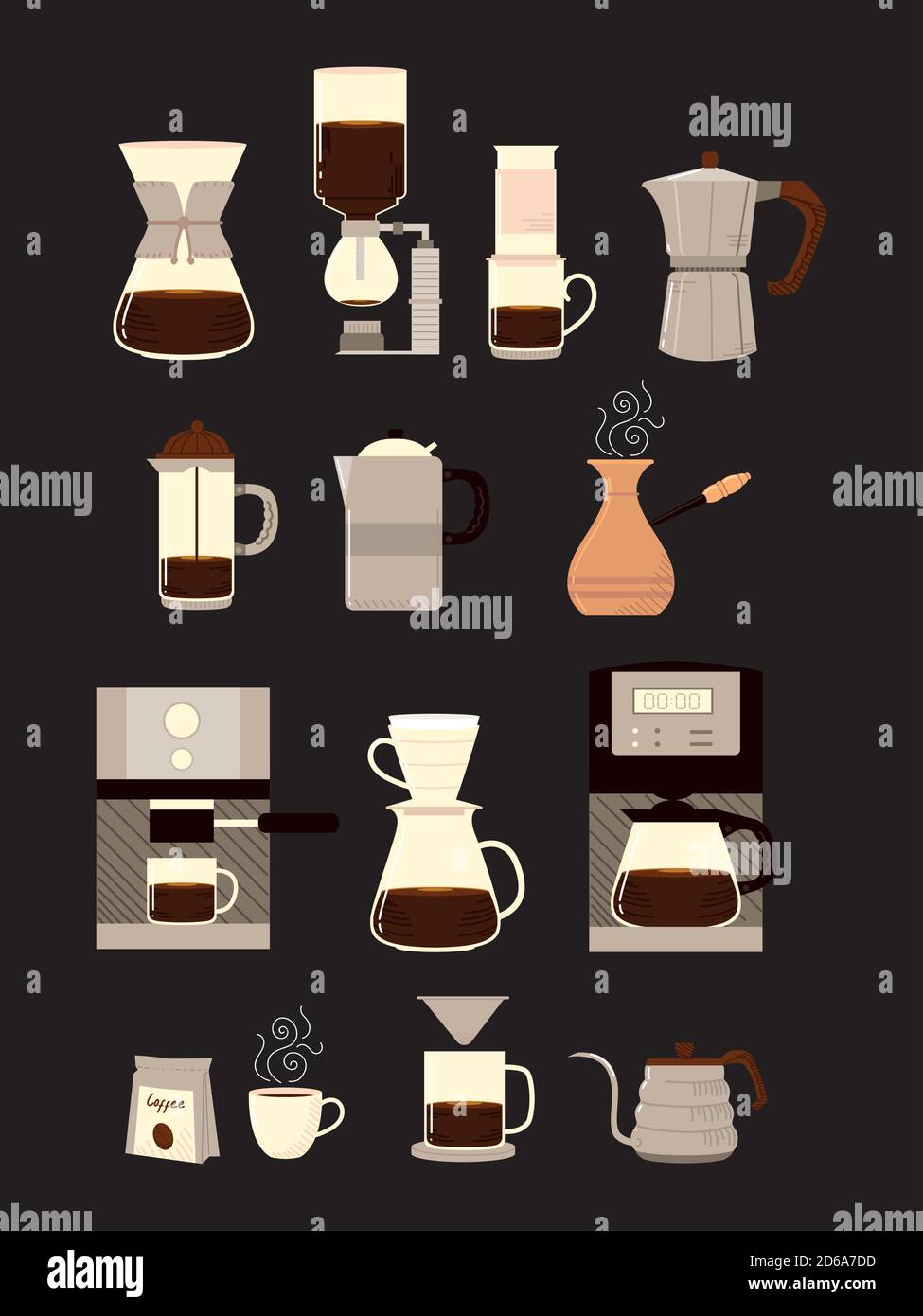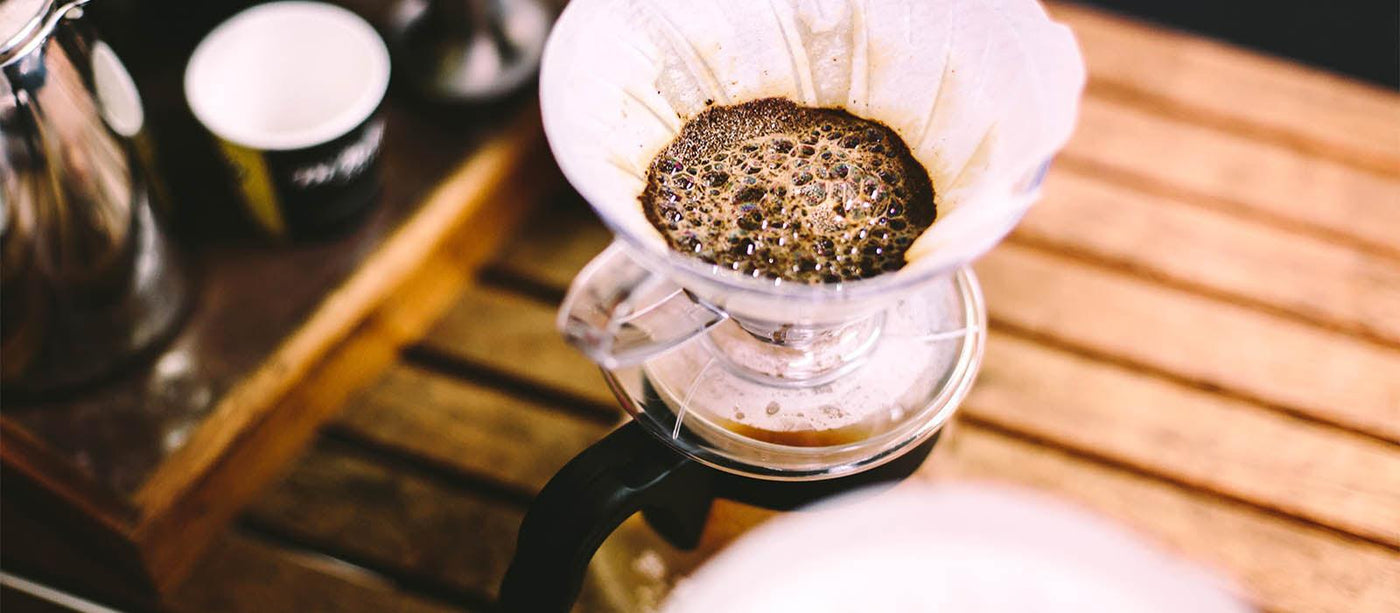Grasping Coffee Brewing Methods: Important Strategies for Every Coffee Lover
Grasping Coffee Brewing Methods: Important Strategies for Every Coffee Lover
Blog Article
The Scientific Research Behind Coffee Developing: How Temperature and Time Affect Your Beverage
Recognizing the scientific research behind coffee developing discloses that temperature level and time are not simple variables however critical aspects that determine the beverage's taste profile and total top quality. As we discover the nuances of these elements, the question occurs: just how can one efficiently balance temperature and time to attain that ideal mixture?
The Chemistry of Coffee Extraction
The chemistry of coffee extraction delves into the detailed processes that change raw coffee beans into the fragrant drink taken pleasure in worldwide. This makeover mostly includes the solubility of various substances existing in the beans, which are influenced by variables such as work dimension, water quality, and the brewing technique employed.
Throughout the developing process, warm water works as a solvent, extracting soluble compounds, including high levels of caffeine, lipids, acids, and sugars, from the coffee premises. Each substance adds to the flavor profile, scent, and body of the last drink. For example, acids are accountable for bright and appetizing notes, while oils add to a rich mouthfeel.
The extraction process is not consistent; different compounds liquify at different prices. The initial stages of brewing essence acids and sugars, bring about a pleasant acidity, while prolonged removal can lead to bitterness as a result of over-extraction of unwanted substances. Recognizing these chemical communications is important for maximizing brewing techniques, as the balance between extraction time and water temperature can substantially influence the total high quality of the coffee. Ultimately, understanding the chemistry of coffee extraction is key to achieving a well-rounded and tasty cup.
Ideal Developing Temperatures
Discovering the right brewing temperature is necessary for opening the full potential of coffee tastes and aromas - coffee brewing methods. Research suggests that the optimum array for brewing coffee lies between 195 ° F to 205 ° F(90 ° C to 96 ° C) Within this range, the extraction process properly dissolves the preferable soluble substances in coffee beans, leading to a delicious and well balanced cup
Developing at lower temperatures, such as below 195 ° F(90 ° C ), might lead to under-extraction, yielding a weak and acidic brew with soft flavors. On the other hand, brewing at temperature levels surpassing 205 ° F(96 ° C) can bring about over-extraction, generating a bitter and rough taste as a result of the excessive dissolution of undesirable substances, such as tannins.
Moreover, the suitable developing temperature can differ depending upon the coffee bean kind and roast level. For circumstances, lighter roasts frequently take advantage of somewhat higher temperature levels to boost their complicated taste profiles, while darker roasts might be better matched to lower temperatures to reduce anger.
Ultimately, keeping accuracy in brewing temperature levels is vital for accomplishing a harmonious equilibrium of flavors, making certain that every mug of coffee provides an enjoyable sensory experience.
Impact of Developing Time
Developing time plays an essential function in determining the taste profile and overall high quality of coffee. The removal procedure, which influences the taste, fragrance, and body of the drink, is mainly based on the length of time the coffee premises are in contact with water. Much shorter brewing times can lead to under-extraction, resulting in a weak or sour flavor, as not adequate soluble substances are liquified. Alternatively, extended brewing can bring about over-extraction, where unwanted substances are launched, leading to an astringent or bitter taste.
Optimal developing time differs relying on the method used and the work dimension of the coffee. For example, a French press typically needs concerning 4 mins, while espresso extraction is typically finished within 25 to 30 secs. It is vital to calibrate brewing time in combination with other variables, such as water temperature level and coffee-to-water proportion, to attain the wanted flavor profile.
Comprehending the effect of developing time allows coffee lovers to improve their brewing strategies, ultimately improving the sensory experience of their cup (coffee brewing methods). With mindful interest to this variable, one can open the full potential of the coffee, disclosing its distinct characteristics and nuances
Brewing Methods and Their Effects

For example, methods like French press and cold mixture enable a much longer steeping time, causing a fuller body and durable flavor due to boosted extraction of oils and soluble solids. On the other hand, espresso developing utilizes high stress and a much shorter removal time, generating a concentrated shot that stresses extreme tastes and a rich crema.
Pour-over strategies, such as Chemex or V60, supply an even more regulated removal process, enabling the brewer to manipulate flow price and water distribution, which can boost illumination and clearness. On the other hand, percolation methods cycle water with the coffee premises several times, bring about a more powerful, usually bitter taste.
Lastly, using paper filters versus metal filters can also affect the final taste; paper filters normally yield a cleaner cup by trapping oils and great particles, while metal filters enable even more oils to pass through, adding to a fuller mouthfeel - coffee brewing methods. Recognizing these nuances can boost the coffee experience dramatically
Tips for Perfecting Your Mixture
A well-executed brew can change also the easiest coffee into a remarkable experience. To attain this, attention to information is necessary. Begin with top notch, freshly roasted beans, as their taste profile diminishes with time. Grind the beans prior to making to make the most of quality, making sure the work size matches your developing technique-- coarser for French press and finer for coffee.
Water quality plays a vital duty; usage filteringed system water devoid of impurities. The ideal brewing temperature ranges between 195 ° F and 205 ° F(90 ° C to 96 ° C ) As well warm can swelter the coffee, while also cool may under-extract flavors.
Timing is just as vital. For immersion methods, steeping for three to 5 mins is optimum, whereas drip techniques typically take about five minutes. Explore brew times to discover your preferred toughness.

Verdict
In summary, the elaborate connection between temperature and time is paramount in the coffee brewing process. Comprehending these clinical principles equips individuals to refine their developing techniques, inevitably leading to an extra delightful and well balanced coffee experience.
Understanding the scientific research behind coffee brewing reveals that temperature level and time are not plain variables however crucial elements that dictate the drink's flavor account and total quality. click to read more Comprehending these chemical interactions is essential for enhancing developing techniques, as the equilibrium in between extraction time and water temperature can considerably influence the general quality of the coffee.Brewing pop over to this web-site time plays a pivotal role in figuring out the flavor account and general high quality of coffee. By concentrating on these elements-- bean top quality, grind size, water temperature level, steeping time, and proportion-- you can raise your coffee developing process, resulting in a continually superior mug.
In recap, the intricate connection in between temperature and time is critical in the coffee brewing process.
Report this page